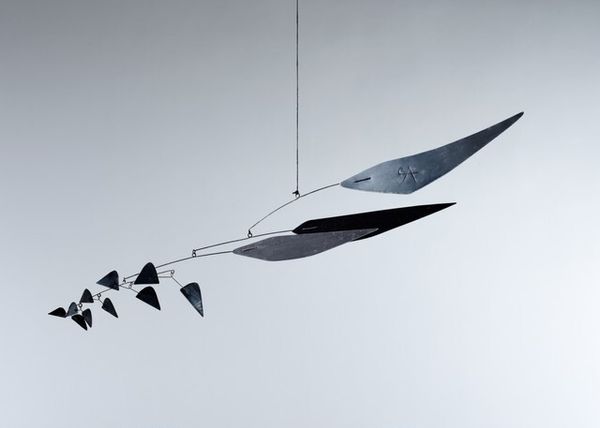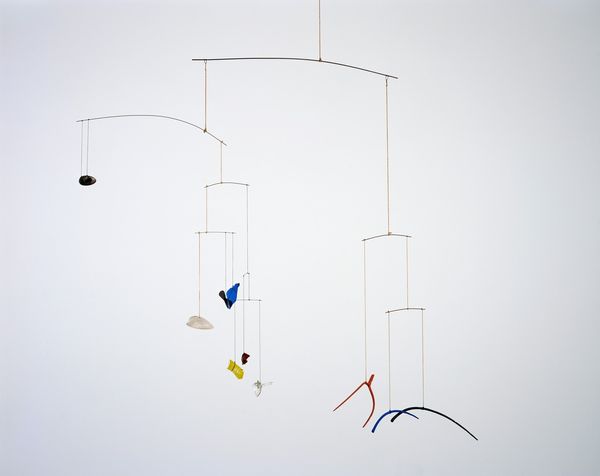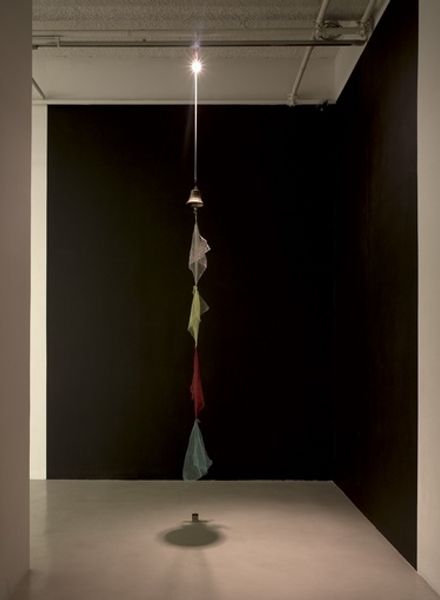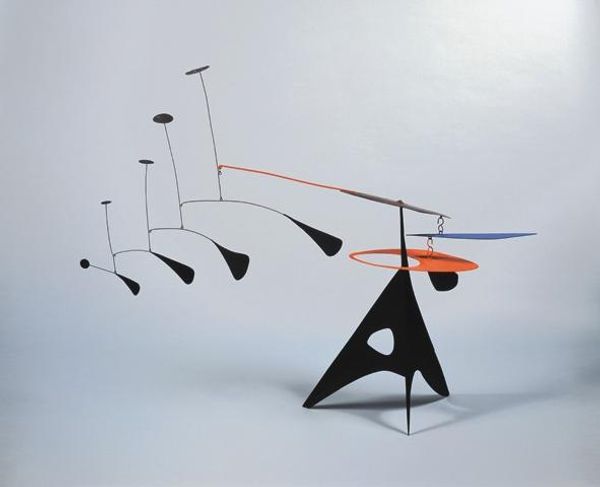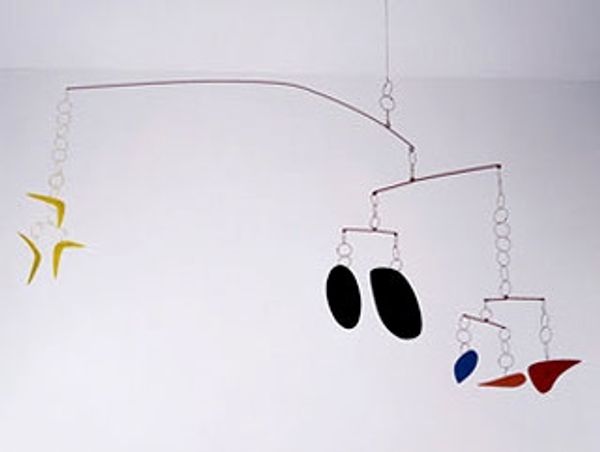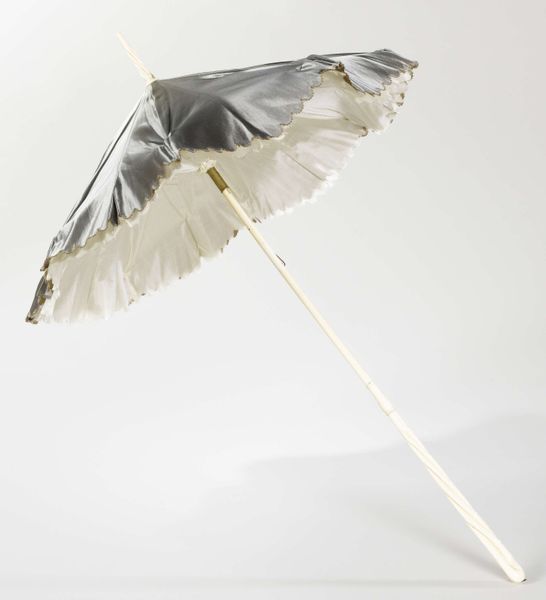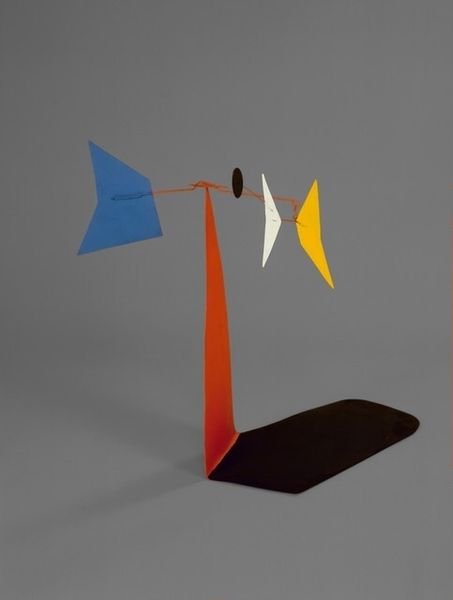
Copyright: Alexander Calder,Fair Use
This is Alexander Calder’s 'Cône d'ébène', a mobile sculpture crafted in the mid-20th century. It exists in a lineage of artworks, in which sculpture rejects monumentality in favor of delicate suspension and motion. But its radicality also depends on a culture of museum display, which emerged in the 1930s, that invited viewers to contemplate artworks as discrete aesthetic objects set apart from everyday life. Calder’s mobile also speaks to the utopian spirit of mid-century design, an impulse to make art a part of daily experience. To understand better the mobile's cultural impact, we might consult period publications like 'Art in America', exhibition catalogs, and the records of institutions such as the Museum of Modern Art, which championed abstract art as a universal language during this period. Art history teaches us that the meaning of art is never fixed, but instead shifts with the contexts in which it is encountered.
Comments
No comments
Be the first to comment and join the conversation on the ultimate creative platform.
